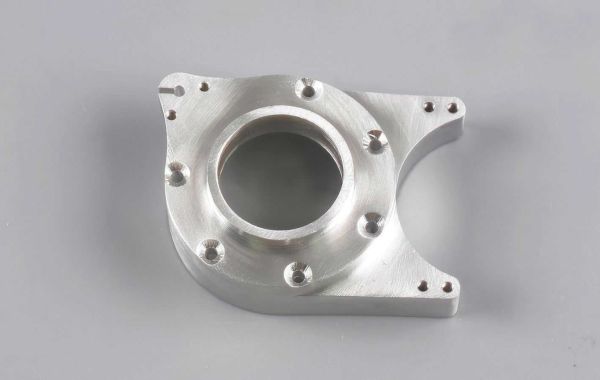SK5 is believed to be the best form of carbon steel out there. It has high hardness and wear resistance, which experts and enthusiasts highly value such features in the manufacture of cutting tools for any industry and the making of long-lasting blades. Herein, we will explain what SK5 steel is and what properties it has.
Overview of Carbon Steel
Carbon steel is a series of steels, which is mainly alloyed with carbon. Its carbon content is about 0.05% to 1%. With the rise of carbon content, the strength of the steel usually increases and its ductility reduces. Besides, it contains other elements including manganese, silicon, and chromium. These elements have a certain effect on the performance of carbon steel. According to carbon content, carbon steel is divided into three main categories: low carbon steel, medium-low-carbon steel, and high carbon steel.
Low carbon steel
Low carbon steel is a steel that contains less than 0.3% of carbon. This is the most common grade of carbon steel. Low carbon steel is soft and ductile; it cannot be heat treated because of the low content of carbon, and it also makes it easier to weld.
Representative types include A36, 1018, and 1020.
Medium Carbon Steel
Low carbon steel is a type of steel that contains about 0.3% to 0.5% carbon. Medium carbon steel has a fairly good balance in both strength and ductility. It is stronger and harder compared to low carbon steels but is also treatable by heat for strength improvements.
Typical grades: 1045, 1060, 1040
High carbon steel
Low carbon steel is steel that contains 0.6% to 1.0% carbon. Carbon steel has the hardest and most wear-resistant qualities, hence these steels are usually made into springs, cutting tools, and high-strength wire. However, it has low ductility and is difficult to weld. It can be heat treated to improve strength.
Representative grades SK2, SK4, SK5
What is SK5 steel?
SK5 is a high carbon steel with a carbon content of about 0.8% to 0.9%. SK5 steel is the commonly used grade in Japan. It is replaced by the new JIS G4401 SK85 and is equivalent to AISI 1085. Aside from iron and carbon, the elemental composition of SK5 includes 0.35% Si, 0.5 to 0.8% Mn, 0.03% and 0.003% S. These elements also influence the properties of SK5 steel.
Properties of SK5 steel
As high carbon steel, SK5 is characterized by high strength and hardness, making it suitable for manufacturing such parts that are used in high-strength environments. Besides high hardness, SK5 steel also contains a certain amount of Mn which enhances its toughness and durability. SK5 steel can be heat treated to increase its performance. For instance, SK5 steel has improved hardness and is more resistant to wear after quenching.
Comparison of SK5 to Other Steels
Compared with low carbon steels, SK5 has much higher hardness and strength but can be brittle. SK5 steel is less corrosion-resistant compared to stainless steel. We know that in stainless steels, chromium content is usually 10.5% or more, but in SK5, it is about 0.1%, and so it will rust.
SK2, SK4, and SK5 are all high carbon steels that differ, for the most part, in their carbon content.
How SK2 and SK5 Steels Differ
SK2 is a type of high carbon steel with a carbon content of 1.15% to 1.25%. SK2 has a higher carbon content than SK5, making it a harder metal.
SK4 vs SK5 steel
SK4 is also a high carbon steel with a carbon content between 0.90% and 1.0%. The carbon content is between SK2 and SK5. Thus, the wear resistance and hardness are also a compromise between SK2 and SK5.
SK5 vs. D2 Steel
D2 steel is a kind of steel with a higher carbon content of 1.4% to 1.60%, providing better hardness, wear resistance, and edge retention, ideal for heavy-duty tools used very frequently, such as cutting tools, dies, and molds.
As shown in the table, D2 steel has more Chromium at 12%, which greatly contributes to its corrosion resistance and makes it less prone to rust. A higher carbon content helps D2 stay sharper longer.
Benefits of Using SK5 Steel
SK5 steel has several key advantages:
Edge Retention: SK5 is an extremely hard steel, with great edge retention. The carbon percentage range is from 0.8 to 0.9%. Wear resistance: The fine particles and carbides offer great wear resistance.
Toughness: SK5 steel is tough, with great resistance to impacts. This steel balances hardness and toughness at the cost of corrosion resistance; it is not possible to achieve corrosion resistance, high hardness, and high toughness all at once.
Cost-effectiveness: SK5 steel is of high performance and yet considerably cheap compared to other high alloy steels.
Applications of SK5 Steel
SK5 steel is a type of high-carbon steel and therefore boasts a number of key benefits. Some of the most striking features of SK5 steel include its hardness and strength, which make it suitable for use in high wear and load applications. Its corrosion resistance is considered relatively lower. Nonetheless, effective improvement is possible by surface treatments and coating protection. The wide usage of SK5 steel is seen in many industries.
Automotive Industry
SK5 steels are widely used for manufacturing all important parts in the automotive industry, including gears, drive shafts, and suspension system parts. The high strength and excellent abrasion resistance of SK5 steel can enable these parts to resist wearing even under heavy loads and long-time use, extending the service life of automotive parts and improving the comprehensive performance of a vehicle.
Tools
SK5 steel is applied broadly in tool making, especially knives and blades. The high hardness and abrasion resistance of SK5 steel guarantee that even long-term use of cutting edges of such tools as ordinary scissor blades, razors, and garden instruments remains sharp and expands their service life.
Household Appliances
SK5 steel is applied in household appliances to manufacture some high-strength parts, such as cutting blades and gear parts for power tools. Since there is wear resistance and high fatigue resistance within SK5 steel, SK5 steel parts can keep good working condition even under high-strength use.
Manufacturing
SK5 steel has wide applications in mass production for all kinds of machine tools, cutting tools, and press dies. For example, cutting tools and press dies in large-scale production made of SK5 steel have long service life and stability even under high-stress working conditions.
SK5 steel is utilized to manufacture high-precision gears, bearings, and machine accessories in the precision machinery field. These parts need not only to support high-intensity loads but also to have a high degree of precision. SK5 steel has ensured efficient operation of equipment even in such harsh environments.
Conclusion
SK5 steel is basically characterized by its unique composition, which usually contains 0.8% to 0.9% carbon content. This high carbon content not only increases its hardness but also keeps it sharper and longer compared to many other kinds of steel. With tools and products, SK5 steel can serve many years without performance sacrifice. His accomplishments so far say a lot about his abilities, and for that, he is an extremely important material that should be in the toolbox of every serious craftsman.








